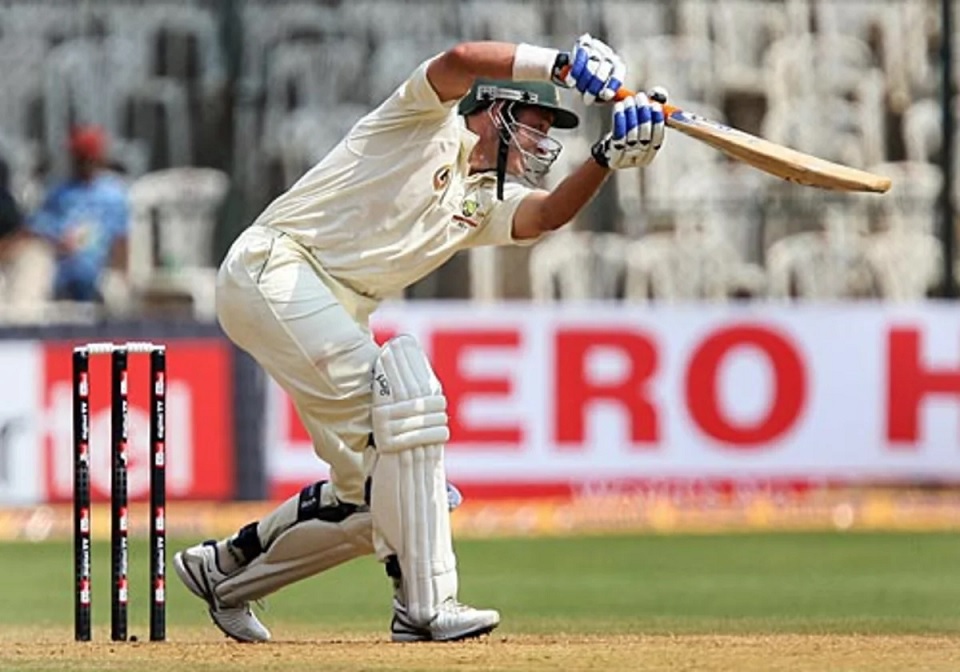A batters footwork, to move or not to move
Peter Procopis | May 16, 2023

Stand still. Don’t overstride. Stable base. Widen your stance.
There is something valuable in each of these phrases for batsmen. Stillness and stability are certainly elements of a sound batting technique. But batsmen and coaches shouldn’t sacrifice the springy, dynamic footwork of a Bradman, Chappell, Lara, Tendulkar or Ponting at the altar of the stability and stillness trend.
Over recent years a trend has emerged in batting coaching away from an emphasis on movement via definitive footwork and towards ‘stillness’ and small, abbreviated foot movements. It’s unclear exactly why this trend has arisen. Perhaps it’s due to the proliferation of top-flight cricket available on our devices? In professional cricket on fast, flat wickets, small, minimal foot movements are often used by top-flight batters to counter express bowling. Batters modify their backlifts and footwork to counter those rapid challenges.
A multitude of cricket commentators are now paid to deliver ‘content’. Many almost exclusively observe top flight batsmen playing on near-perfect surfaces. They attempt to add value with their commentary to a game that is markedly different to the vast majority of cricket played around the globe. The game they observe is played at a different speed on different surfaces and at a different skill level. These commentators are first and foremost entertainers. Hyperbole and buzzwords and phrases like ‘shape’ and ‘stable base’ and ‘stood still and delivered’ abound. Deep analyses of batting craftsmanship, including footwork are rare.
So, perhaps it is this regular diet of top-flight professional cricket and associated commentary that has led to this ‘stillness’ trend? Whilst it’s certainly very important to keep your eyes, your own personal video recorder, still and focussed, it’s unwise to dispense with the fundamental notion that great batsmen are fluid movers with dynamic footwork.
Responding dynamically to the footage a batter captures with their personal ‘video camera’ is the essence of good batting. That’s why set-up and footwork are paramount. Clear, fulsome ‘footage’ coupled with dynamic footwork produces peak performance. Set the camera; spring-load the feet; and look to score.
Each delivery is unique. Each presents opportunities and threats. Consequently, each requires a tailored response. That’s why it’s vital batters use both feet to spring into whatever position that enables them to either score runs or defend their wicket.
Both feet are involved in all strokes, initiating or controlling movement depending upon the delivery.
In a right-hand batter, the right foot provides the impetus for front-foot strokeplay. Batters use the ground reaction force to load up in the ball of the right foot. That load-up and push-off dynamically sends the left foot forward into numerous slightly different positions depending upon the line, length and shape of deliveries. Think Ponting straight drives. For any lefties out there, swap the load foot over to the right and think Michael Hussey cover drives.
It follows too that the reverse pattern occurs for back foot strokeplay. At some point in a right-handed batsman’s response to a delivery, they must load up their left foot and use the ground reaction force to send the right leg and foot into a position from which a powerful, balanced stroke can be played. Think Viv Richards or Virat Kohli pull-shots to picture this move. And just as there are a multitude of front-foot positions, so too there are many different back-foot positions depending upon the particular demands of deliveries.
The different positions referred to above are key. Great batsmen do not move into the same position each time they receive a ‘full’ delivery…because, of course, there are a wide range of different ‘full’ deliveries. Like Federer Nadal and Djokovic when receiving in tennis, they use spring-loaded set-ups to respond in a dynamic, tailor-made fashion to each particular delivery. Sometimes that might mean a small step to counter a near yorker-length ball; a medium step to strike a half volley through the covers; or a classic Ponting-style stride to a good-to full length ball.
Batsmen should aim to have spring-loaded feet like Mohammed Ali’s or Roger Federer’s in their prime. They need to be able to make minute last millisecond adjustments to get into the optimal position to attack or defend each unique delivery. The twin purposes of the stance are setting up the camera and preparing to move.
This is not an argument for always taking a long stride forward or backwards. Neither that approach nor the short, minimal steps currently in vogue should be a panacea for batting coaches. Rather, players and coaches all the way from U10s to Premier Grade Cricket should consider focussing more on setting up in a spring-loaded position on the balls of the feet; taking clear, fulsome footage with their personal video camera; and responding in a dynamic, tailored way to each delivery.
Consider footwork in batting as dynamic, not static; tailored, not off-the-shelf; and more like a boxer’s than a line dancer’s.








